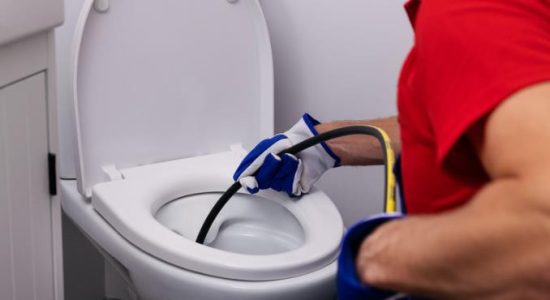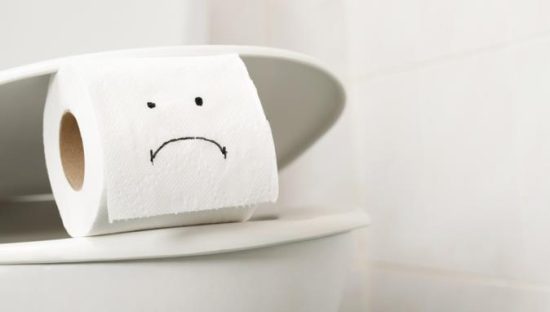How to Unclog a Toilet Fast and Easily? – 10 Methods

Introduction
Dealing with a clogged toilet isn’t always an interesting task for all. It’s messy, inconvenient, and may fast end up a plumbing nightmare if now not properly treated. Thankfully, there are several methods you may try to unclog a toilet quickly and without problems. In this blog, we’ll find out ten powerful techniques to unclog a bathroom quickly and without problems.
How to Unclog a Toilet Fast and Easily? – 10 Methods
1. Plunger Power
The plunger is the most significant device for unclogging a toilet and for precise purposes. Its perfect layout and powerful suction make it exceedingly effective at dissolving blockages.
To use a plunger:
- Ensure sufficient water inside the bowl to cover the rubber cup.
- Position the plunger over the drain hole, then push and pull vigorously to create suction.
- Repeat numerous times till the clog loosens and the water starts to empty.
2. Hot Water and Dish Soap
The easiest and cheapest way is mixing both hot water and dish-cleaning soap to break up the clog. Heat a pot of water on stove until it is boiling. Add half the quantity of dishwasher soap to the toilet bowl, then carefully pour the hot water into the bowl at a height. The mixture of heat and cleaning soap can assist in dissolved blockage and lubricating the pipes, permitting the water to flow freely again.
3. Baking Soda and Vinegar
This classic DIY remedy can work wonders on a stubborn toilet block. Pour one cup of baking soda and two cups of vinegar into the toilet. Allow the aggregate to fizz and bubble for a few minutes, then flush the bathroom to see if the clog has cleared. The chemical reaction between the baking soda and vinegar can help calm natural memory and clear minor blockages.
4. Toilet Auger
For more extreme clogs that face conventional strategies, a closet auger may be a lifesaver. The specialized device has an extended, flexible shaft with a corkscrew-like tip that can snake through the toilet lure and split cussed obstructions. Insert the drill into the toilet bowl and crank the handle clockwise to maneuver the top through the pipes. Once you sense resistance, preserve cranking to interrupt the clog, then retract the auger and flush the bathroom to clear the particles.
5. Enzyme-Based Cleaners

Enzyme-based cleaners are another alternative for tackling toilet clogs, especially those caused by organic waste buildup. These cleaners give you natural enzymes that digest organic dependents and break them down into smaller particles that may be flushed away. Pour the important quantity of cleanser into the bathroom bowl and allow it to sit down for the favored time. Then flush to peer if the clog has cleared or is no longer there. Enzyme-primarily based cleaners are normally stable for septic structures and won’t damage pipes or furniture.
6. Wet/Dry Vacuum
A wet/dry vacuum is an effective tool for unclogging lavatories. Set the vacuum to the moist setting and use it to cast off excess water from the bathroom bowl, leaving simply enough to cover the bottom of the plunger. Place the vacuum hose directly over the drain hollow and create a proper seal, then turn on the vacuum to create suction. With any success, the vacuum’s powerful suction can dislodge the clog and restore proper drainage.
7. Caustic Soda
Caustic soda, or sodium hydroxide, can dissolve organic waste and ease stubborn restroom clogs.
To use caustic soda:
- Carefully pour a small quantity (observe the producer’s instructions for dosage) without delay into the restroom bowl.
- Allow the caustic soda to take a seat for several hours or an afternoon, then flush the restroom to see if the clog has cleared.
- Exercise caution when managing caustic soda, as it can cause pores and skin irritation and ought to be stored out of attain for kids and pets.
8. Use a Wire Coat Hanger

A twine coat hanger can be reused as a makeshift plumbing device to assist in unclogging a restroom in a pinch. Straighten the hanger and create a small hook at one quit, then insert it into the toilet drainage and maneuver it around to dislodge the obstruction. Be cautious not to scratch the porcelain or harm the toilet bowl with the twine hanger. While this method won’t be as effective as a professional tool, it can provide a transient answer until more robust measures are taken.
9. Apply Pressure with a Plastic Bottle
Using pressure with a plastic bottle can assist in dislodging a minor toilet clog. Fill a plastic bottle with heated water (not boiling) and close the cap on the bottle. Position the bottle vertically with the opening facing downward, then press firmly in opposition to the clog in the bathroom bowl. The surprising burst of strain from the water in the bottle may assist break up the obstruction and permit the water to flow freely all over again. While this technique may not succeed every time, it is really worth using in emergencies.
10. Professional Plumbing Services
In cases of intense or recurring lavatory clogs, searching for assistance from professional plumbing offerings can be necessary. A licensed plumber can diagnose the underlying reason for the clog and advocate suitable solutions, such as repairing broken pipes or replacing malfunctioning furniture. While professional offerings may include costs, they could offer ideas and ensure the clog is well resolved to prevent future troubles.
Precautions to Prevent Toilet Clogs
- Avoid Flushing Non-Flushable Items: Items like infant wipes, cotton swabs, and female hygiene materials can effortlessly clog toilets and need to in no manner be flushed.
- Use Less Toilet Paper: Excessive bathroom paper can contribute to clogs, so try to use less or choose thinner, more easily dissolvable sorts.
- Regular Maintenance: Periodically, measures like pouring hot water down the drain or using enzymes- the usage of enzyme-based total cleaners can help prevent it from forming inside the first location.
Conclusion
In conclusion, managing a clogged toilet can be frustrating, but it is not an issue with the proper techniques. Whether you opt for the plunging strength of a plunger, the chemical reaction of baking soda and vinegar, or the precision of a bathroom drill, plenty of alternatives help you fast and without problems unclog your toilet. By taking preventive measures and knowing how to tackle clogs after they arise, you may maintain your lavatory plumbing by strolling quickly and avoiding destiny headaches.
Related Articles:
Frequently Asked Questions
1. What are the common causes of toilet clogs?
Toilet clogs can occur due to a variety of reasons, including flushing non-flushable items such as wipes or feminine hygiene products, excessive toilet paper usage, or the accumulation of hair, soap scum, and other debris in the pipes.
2. How can I prevent toilet clogs from happening?
To prevent toilet clogs, avoid flushing non-flushable items, use less toilet paper, and consider using preventive measures such as enzyme-based cleaners or periodic maintenance with hot water and vinegar to keep the pipes clear.
3. Are chemical drain cleaners safe to use in toilets?
While chemical drain cleaners can be effective at clearing clogs, they can also be harsh on pipes and fixtures and may not be suitable for all types of clogs. Enzyme-based cleaners are generally safer and more environmentally friendly alternatives.
